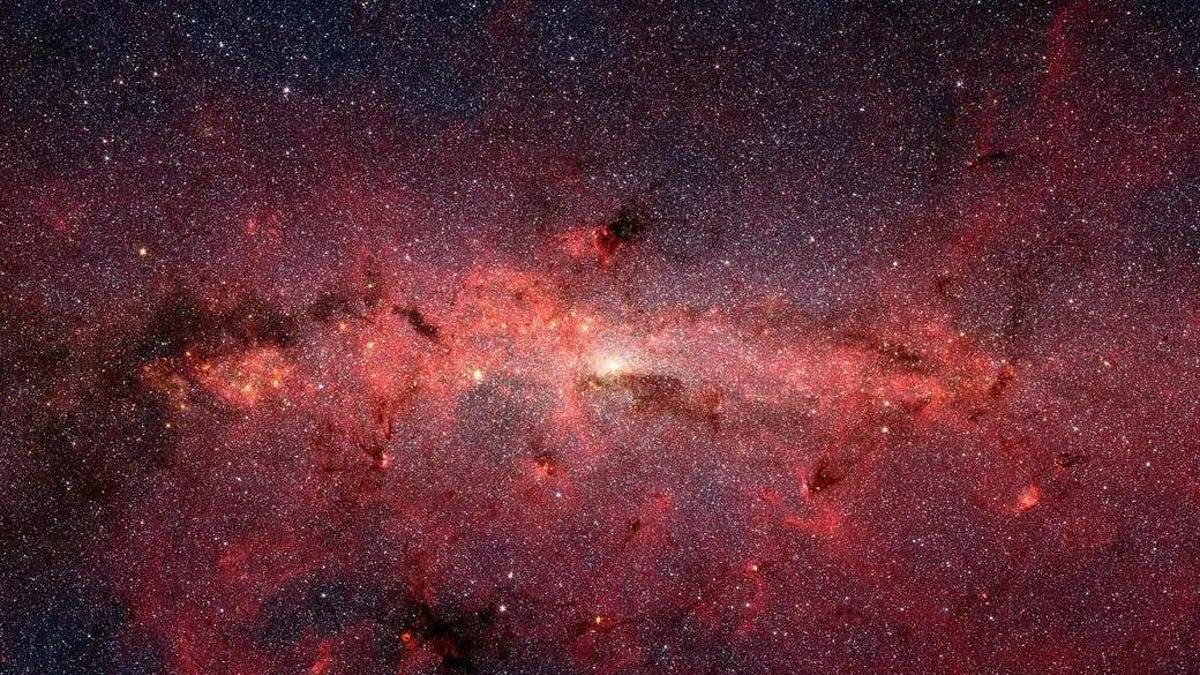
Stars very close to the center of our galaxy could be fueled by dark matter in perpetuity, according to a team of astronomers who recently studied the distant light sources.
The group of stars, known as S-cluster stars, is just three light-years from the center of the Milky Way (for reference, we are about 26,000 light-years from the center of our galaxy, which hosts a supermassive black hole at its core). The stars are surprisingly young for their galactic neighborhood, yet they don’t look like stars that simply migrated to this part of the Milky Way after forming in another location. The region also contains some surprisingly heavy stars and fewer old stars than expected.
Advertisement
As reported by Space.com, the research team posits that these weird stars may be accreting dark matter, which they then use as fuel to keep burning. Since models estimate there is plenty of dark matter near the galaxy’s core, the stars are “forever young,” as study lead author Isabelle John, an astrophysicist at the Kavli Institute for Particle Astrophysics and Cosmology told Space.com. Effectively, the stars have a long, long way to go before they start running low on fuel. The team’s paper is currently hosted on the preprint server arXiv, meaning it has not yet gone through the process of peer review.
Advertisement
Dark matter appears to make up 27% of the universe, but it has so far eluded direct detection. In other words, astronomers cannot see it in any band of light using existing instruments. Instead, dark matter is seen through its effects on objects that are visible, from distant stars to huge clusters of them. Though dark matter is invisible to us, its gravitational effects are apparent. The jury’s out on whether there is one culprit for dark matter—a theoretical particle like the axion, for example—or if there are multiple unknown things that we have given the umbrella term of dark matter.
Advertisement
The newly introduced paper is hardly the first to explore how dark matter could interact with stars. Just earlier this year, a different team of researchers proposed that neutron stars—extremely dense stellar remnants—could actually be a source of dark matter. Last July, yet another team suggested that the Webb Telescope had detected stars that were powered by dark matter.
“Star formation models suggest that stars cannot form within [0.326 light-years] of the central black hole, where the S-cluster stars are found,” the researchers wrote. “Rather, the stars must have formed elsewhere and migrated towards the Galactic Center. Conversely, observations suggest that stars in this region are young [less than or approximately equal to 15 million years old], which indicates that the stars might have formed more locally.”
Advertisement
In their letter, the team also introduced a dark matter star version of the Hertzsprung-Russell diagram, a chart which maps stars’ luminosities and effective temperatures. The stars in the dark version of the diagram have lower temperatures than stars on the established diagram, but still have similar luminosities to them. “The dark matter density in these stars continuously replenishes, granting these stars immortality and solving multiple stellar anomalies,” the team wrote.
By charting out the ways these potentially dark matter-fueled stars evolve and age, the team could better characterize how dark matter manifests itself in the universe and interacts with ordinary matter. The team also noted that thirty-meter class telescopes would be able to better measure stars near the Galactic Center, clarifying whether dark matter is having any impact on the stars in that region.
Advertisement
More: These Violent Collisions Could Be Producing Dark Matter
Services Marketplace – Listings, Bookings & Reviews